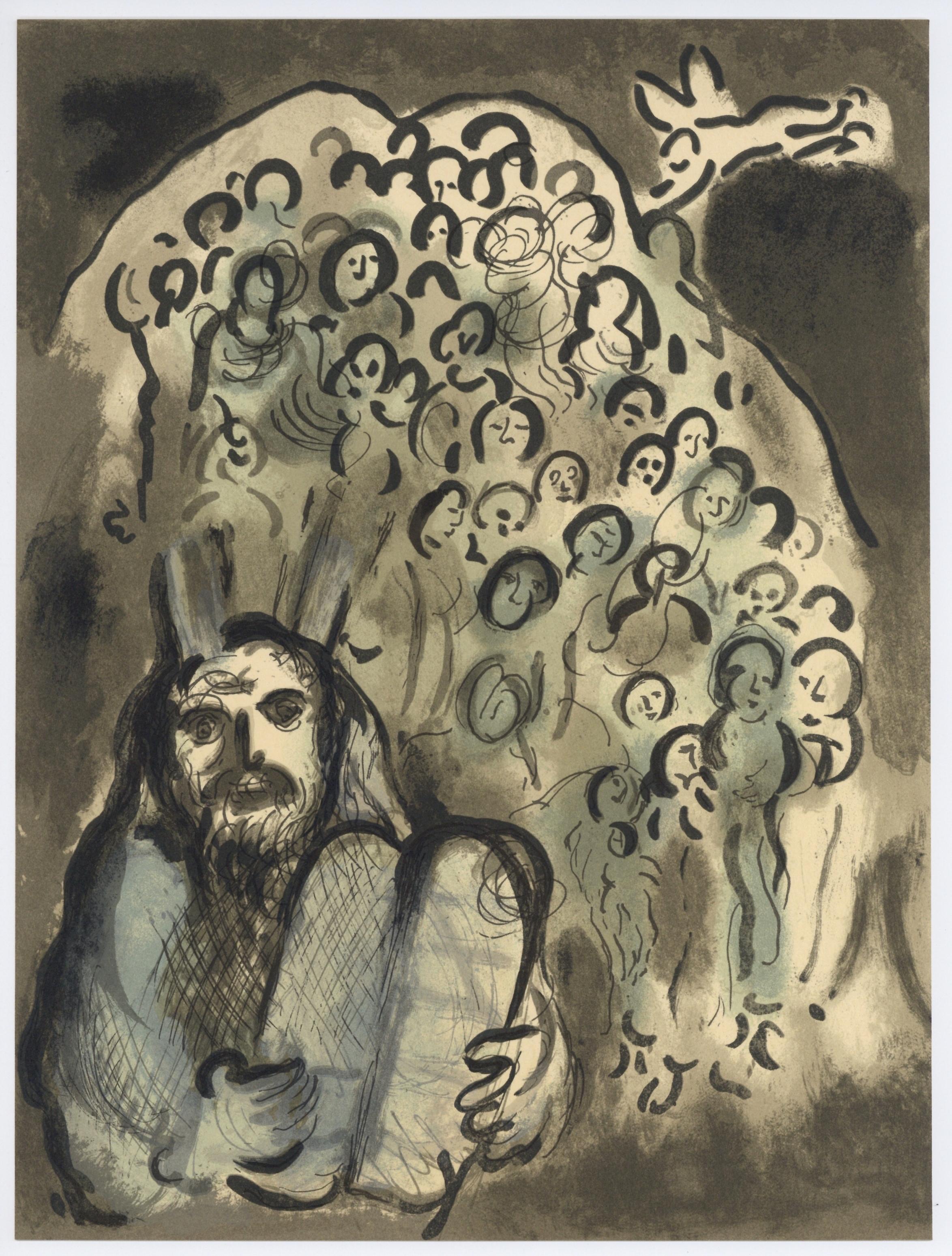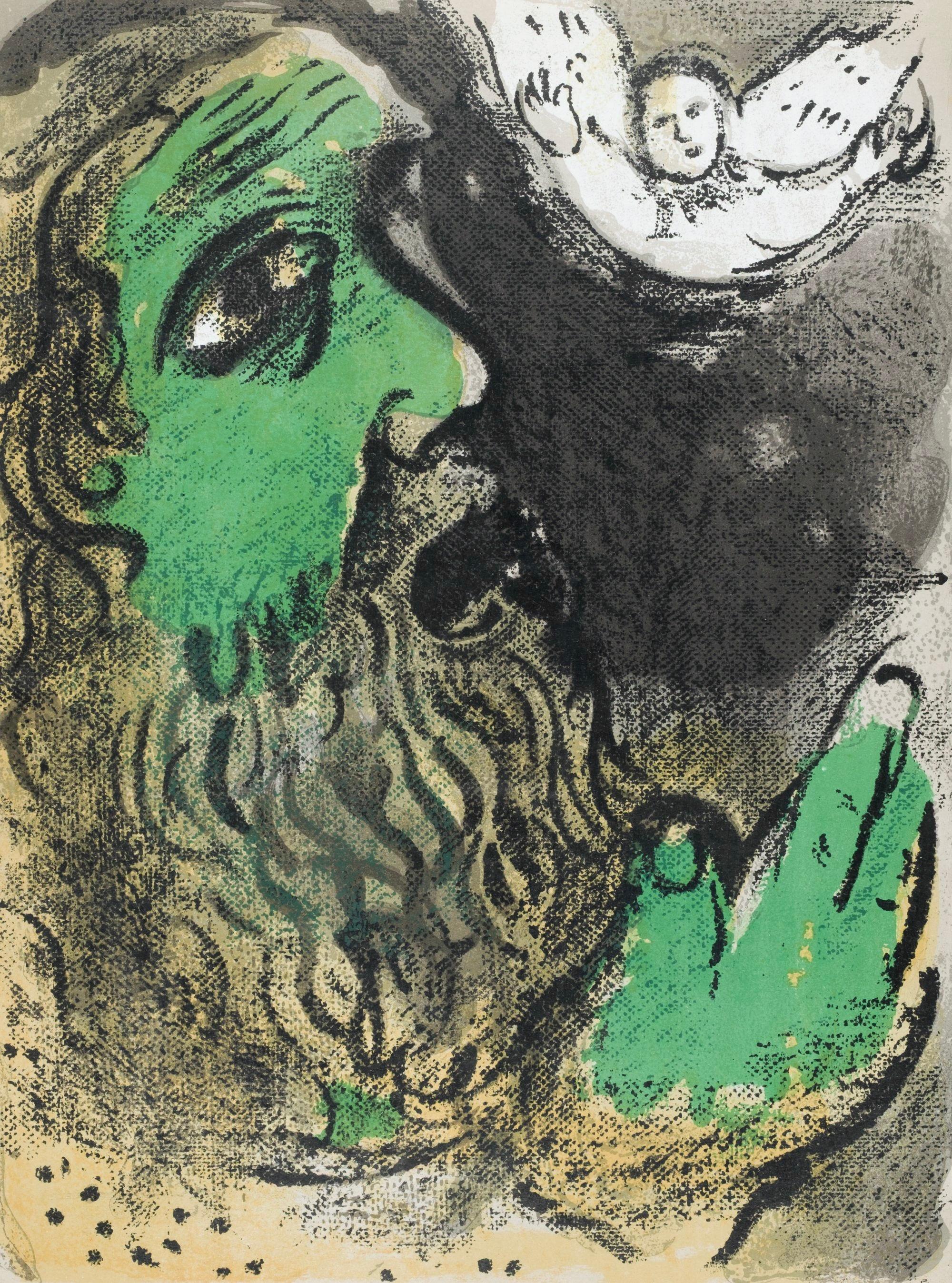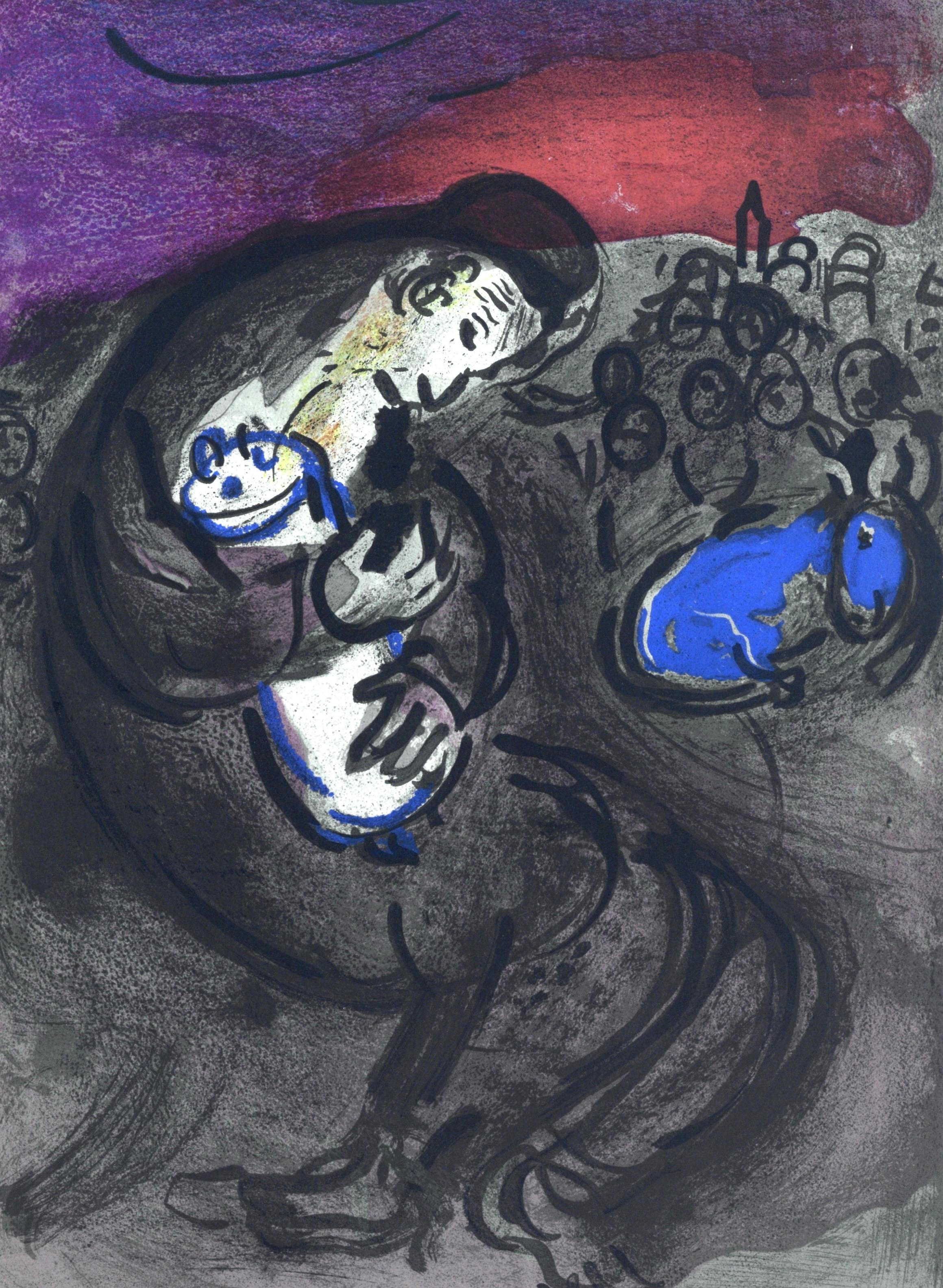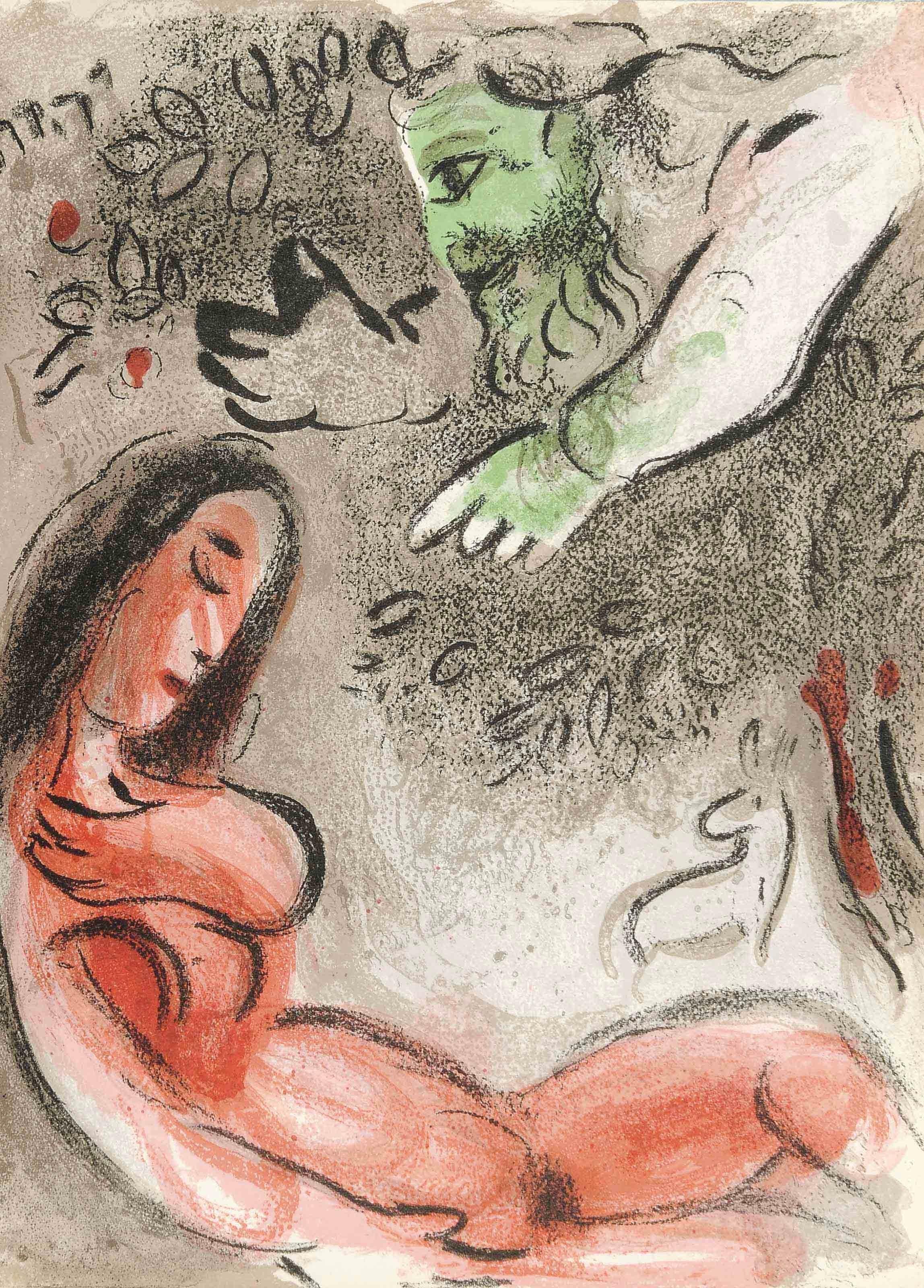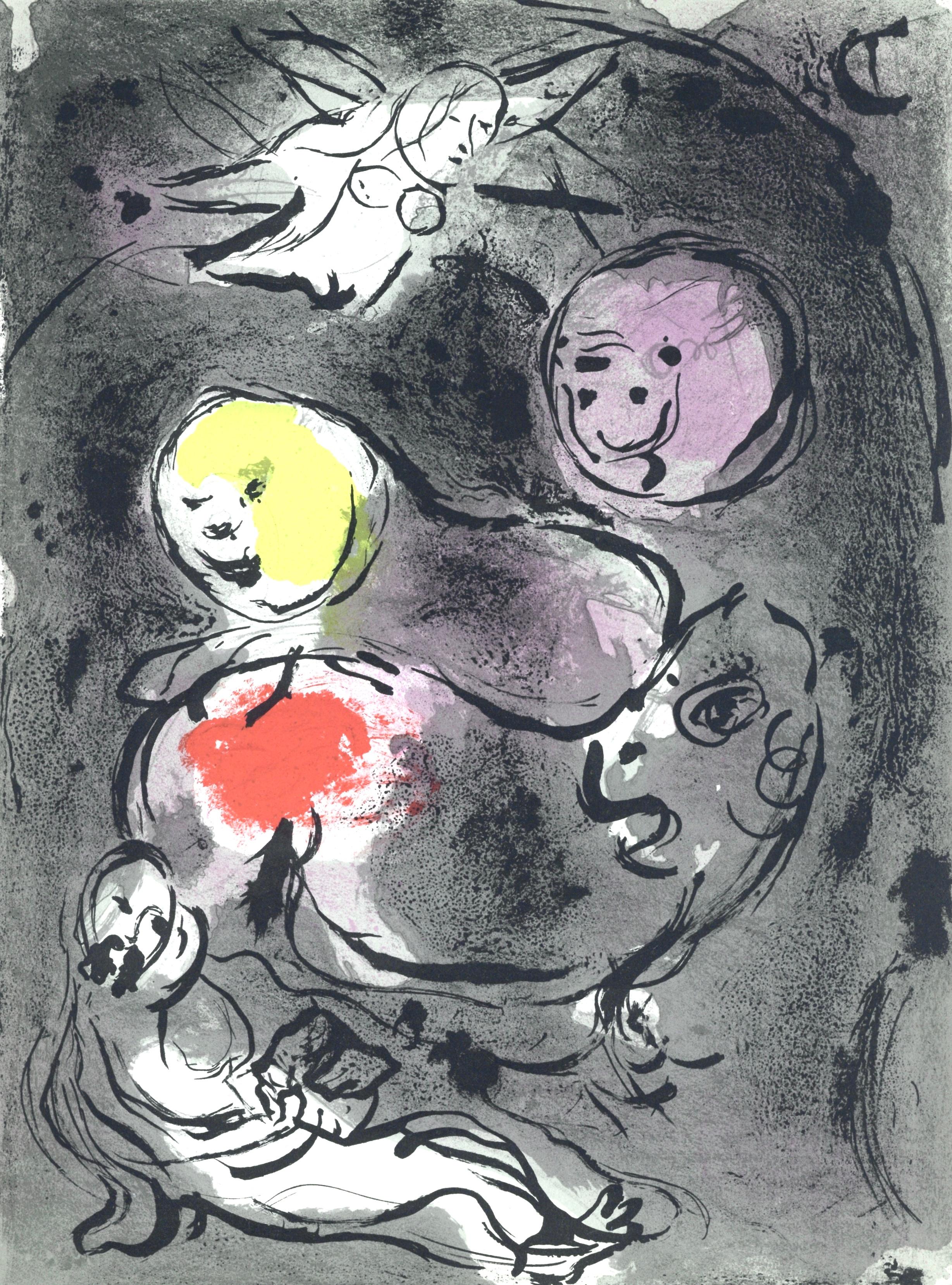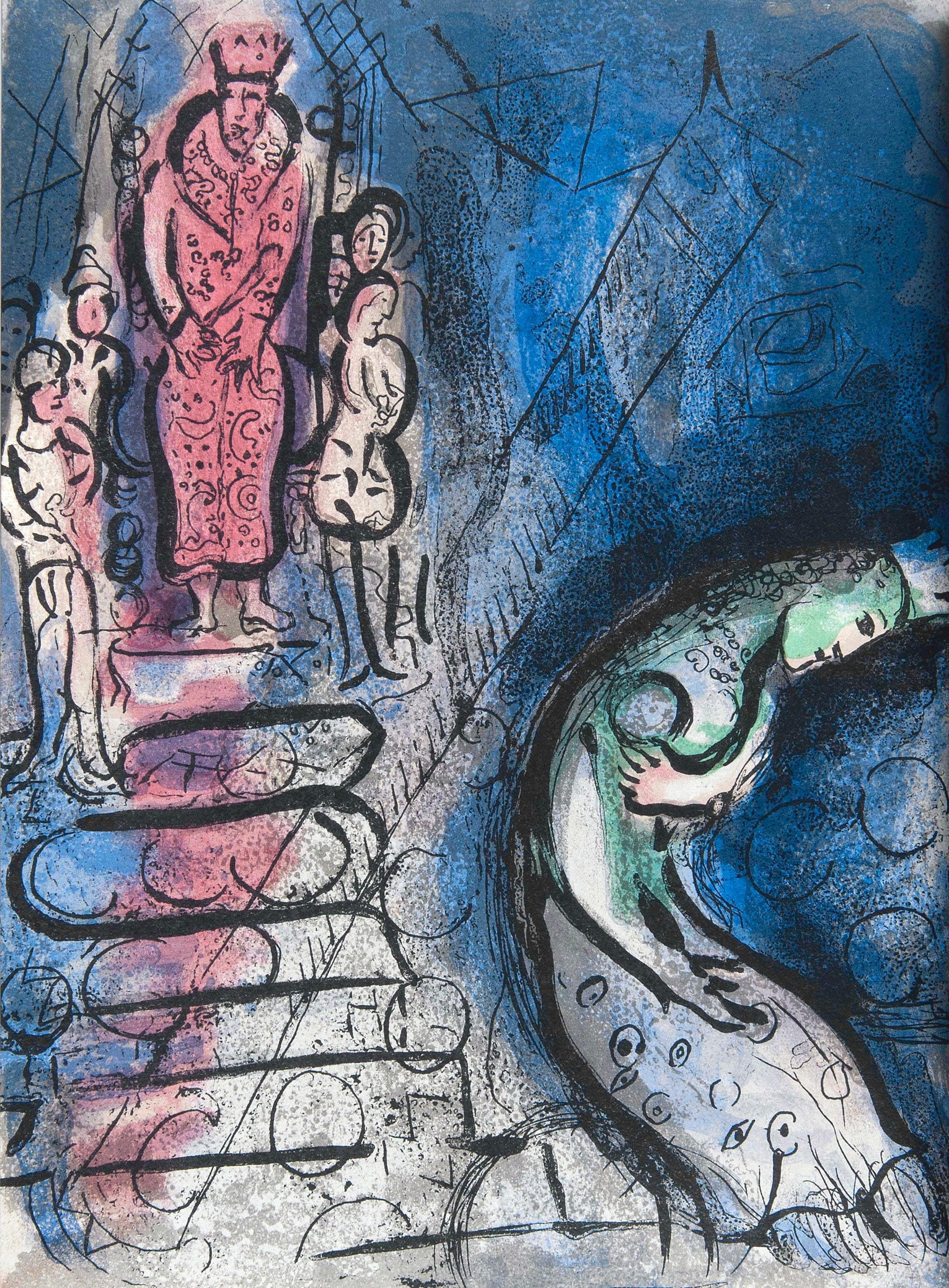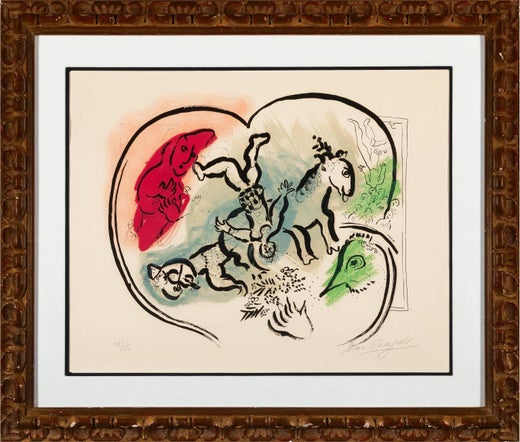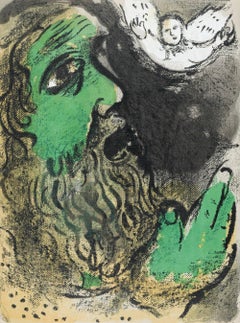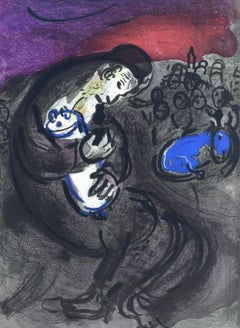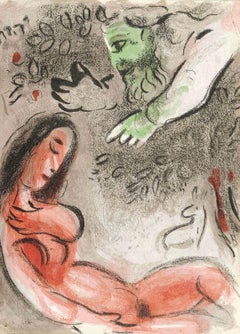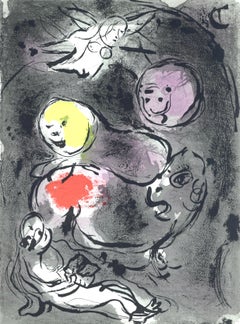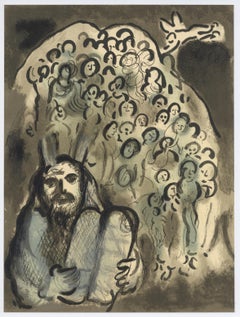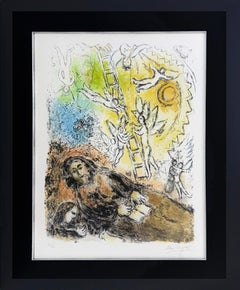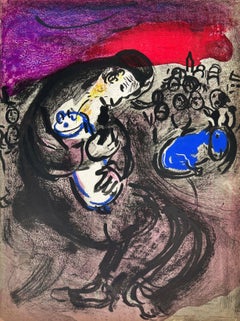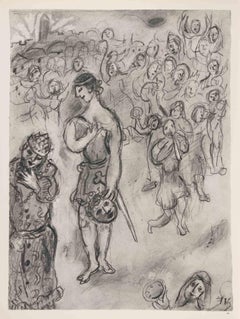This exquisite lithograph by Marc Chagall (1887–1985), titled Moise et son peuple (Moses and His People), from the album Le Message Biblique, Marc Chagall (The Biblical Message, Marc Chagall), originates from the 1972 edition published by Fernand Mourlot, Editeur, Paris, and printed by Mourlot Freres, Paris, December 1972. This profound and spiritually charged composition embodies Chagall’s lifelong dialogue with the themes of faith, revelation, and divine guidance. Moise et son peuple depicts the moment of Moses leading the Israelites, suffused with the artist’s radiant color and transcendent symbolism. Through a luminous interplay of blues, greens, and golds, Chagall conveys the sacred bond between humanity and the divine, uniting biblical narrative with modern visual poetry. The composition’s rhythm and emotional depth reveal Chagall’s mastery of translating spiritual experience into color and form, a hallmark of his late religious works.
Executed as a lithograph on velin paper, this work measures 12.5 x 9.5 inches (31.75 x 24.13 cm). Unsigned and unnumbered as issued. The edition exemplifies the exceptional craftsmanship of the Mourlot Freres atelier, whose close collaboration with Chagall produced some of the artist’s most celebrated lithographic masterpieces.
Artwork Details:
Artist: Marc Chagall (1887–1985)
Title: Moise et son peuple (Moses and His People), from Le Message Biblique, Marc Chagall (The Biblical Message, Marc Chagall)
Medium: Lithograph on velin paper
Dimensions: 12.5 x 9.5 inches (31.75 x 24.13 cm)
Inscription: Unsigned and unnumbered as issued
Date: 1972
Publisher: Fernand Mourlot, Editeur, Paris
Printer: Mourlot Freres, Paris
Catalogue raisonne references: Chagall, Marc, et al. The Lithographs of Chagall, Volume IV, 1969–1973. Crown Publishers, Inc., 1974, illustration 689. Cramer, Patrick, and Meret Meyer. Marc Chagall: Catalogue Raisonne Des Livres Illustres. P. Cramer ed., 1995, illustration 92.
Condition: Well preserved, consistent with age and medium
Provenance: From the album Le Message Biblique, Marc Chagall (The Biblical Message, Marc Chagall), published by Fernand Mourlot, Editeur, Paris, December 1972, in an edition of X̅
Notes:
Excerpted from the album (translated from French), This work, directed by Fernand Mourlot, based on the model of Charles Sorlier, has been completed to print in December 1972 on the presses of Draeger Freres in Montrouge. The original lithography has been drawn on the presses of Mourlot Freres in Paris. This work was made with the collaboration of Charles Marq and Charles Sorlier to whom we extend our warmest thanks.
About the Publication:
Le Message Biblique, Marc Chagall (The Biblical Message, Marc Chagall), published in December 1972 by Fernand Mourlot, Editeur, Paris, is one of the most important printed tributes to the artist’s spiritual vision and his lifelong engagement with biblical themes. Conceived to coincide with the opening of the Musée National Message Biblique Marc Chagall in Nice, the album unites a series of original lithographs that reflect Chagall’s profound meditation on the Hebrew Scriptures and their enduring moral and symbolic resonance. The publication compiles color lithographs derived from Chagall’s monumental paintings for the museum, each expressing an atmosphere of faith, revelation, and transcendence through radiant color and ethereal design. Produced under the direction of Fernand Mourlot, with technical collaboration from Charles Sorlier and Charles Marq, the edition epitomizes the union of art, spirituality, and master printmaking. Printed on the presses of Mourlot Freres and Draeger Freres, Le Message Biblique embodies the highest standards of French artistic craftsmanship and stands as a luminous testament to Chagall’s genius—bridging the sacred and the human through color, light, and timeless symbolism.
About the Artist:
Marc Chagall (1887–1985) was a Belarus-born French painter, printmaker, and designer whose visionary imagination, radiant color, and deeply poetic symbolism made him one of the most beloved and influential artists of the 20th century. Rooted in the imagery of his Jewish heritage and the memories of his childhood in Vitebsk, Chagall’s art wove together themes of faith, love, folklore, and fantasy with a dreamlike modern sensibility. His unique style—merging elements of Cubism, Fauvism, Expressionism, and Surrealism—defied categorization, transforming ordinary scenes into lyrical meditations on memory and emotion. Influenced by Russian icon painting, medieval religious art, and the modern innovations of artists such as Pablo Picasso, Henri Matisse, and Georges Braque, Chagall developed a profoundly personal visual language filled with floating figures, vibrant animals, musicians, and lovers that symbolized the transcendent power of imagination and love. During his early years in Paris, he became an integral part of the Ecole de Paris circle, forming friendships with Amedeo Modigliani, Fernand Leger, and Sonia Delaunay, and his creative spirit resonated with that of his peers and successors—Alexander Calder, Alberto Giacometti, Salvador Dali, Joan Miro, Wassily Kandinsky, Marcel Duchamp, and Man Ray—artists who, like Chagall, sought to push the boundaries of perception, emotion, and form. Over a prolific career that spanned painting, printmaking, stained glass, ceramics, and stage design, Chagall brought an unparalleled poetic sensibility to modern art, infusing even the most abstract subjects with human warmth and spiritual depth. His works are held in the most prestigious museums around the world, including the Museum of Modern Art, the Centre Pompidou, the Tate, and the Guggenheim, where they continue to inspire generations of artists and collectors. The highest price ever paid for a Marc Chagall artwork is approximately $28.5 million USD, achieved in 2017 at Sotheby’s New York for Les Amoureux (1928).
Marc Chagall Moise et son peuple (Moses and His People), Chagall Le Message Biblique, Chagall Mourlot Freres, Chagall Fernand Mourlot, Chagall 1972 lithograph, Chagall velin, Chagall collectible print, Chagall modernist lithograph.
